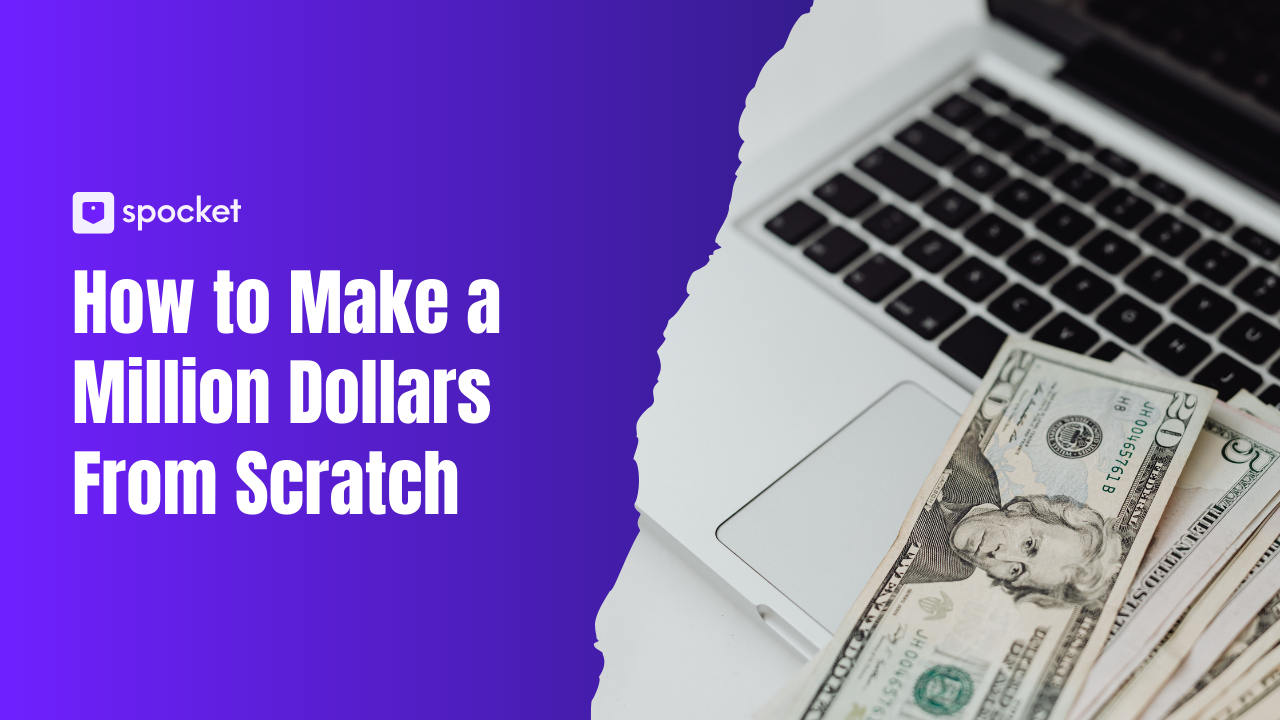Publishing a book is a lifelong goal for all writers. We all dream of seeing our name on the cover of a published book however, navigating the book publishing process can be daunting without the right guidance. There are multiple publishing options available today, from the well-known traditional routes to the more modern self-publishing paths. Each comes with its own set of challenges and rewards, but with the right strategy, you can navigate this process smoothly.
Whether you are aiming for traditional book publishing or exploring self-publishing, understanding the process is key to your success. In this guide, we will explain different publishing options for your book and walk you through the step-by-step process of how to publish a book, sharing practical tips and strategies to help you navigate your journey.
Understanding Your Publishing Goals

Before learning the process of publishing a book, you must define your publishing goals. Every writer has unique motivations for publishing, whether it’s career growth, recognition, financial gain, or to connect with a specific audience. Setting S.M.A.R.T. goals (Specific, Measurable, Achievable, Relevant, and Time-based) is very important for tracking progress and maintaining focus.
Identifying your goals will influence how you approach writing, select your niche, and marketing your book. Along with this, understanding your target audience for your book is equally important. Whether you are writing fiction, non-fiction, or memoirs, aligning your content with reader expectations is important. This clarity helps in choosing effective book publishing strategies, whether traditional publishing or self-publishing is the right path.
Traditional Publishing vs Self-Publishing
When you have embarked upon this journey of publishing your own book, you have two choices: traditional book publishing and self-publishing a book. When considering how to publish a book, it is best to analyze the benefits and challenges of each of the methods.
Traditional Publishing
Traditional publishing involves working with established publishing houses. As a writer, you send your manuscripts to publishers or literary agencies, and if your work is accepted, the publisher takes care of everything, including marketing, distribution, and book design in addition to editing. In exchange, you will receive royalties, from the publisher, who keeps the rights to the work.
Self-Publishing
You can skip traditional publishers and manage the entire publication process by self-publishing your books. You can upload your manuscripts, create book covers, and determine your own price with self-publishing platforms like IngramSpark or Amazon Kindle Direct Publishing. You can receive higher royalties and maintain all rights. Self-publishing is faster, often allowing a book to be published in a matter of days.
Comparing Benefits and Challenges of Traditional Publishing and Self-Publishing
One can also self publish book and its comparison with traditional publishing is added below:
Step-by-Step Guide to Self-Publishing

If you have decided to self-publish your book, don’t stress too much! Below we have discussed the step-by-step process to publish your book along with the list of self-publishing tools, to help the process easier for you.
1. Writing and Editing Your Manuscript
The two most important phases before you learn how to publish a book are writing your manuscript and refining it through editing. Here’s a guide to help you navigate these processes successfully.
Writing Your Manuscript
Start by understanding your target audience and genre. As an author, you need to know what your readers like. Much as entrepreneurs analyze market trends before starting their business, you can also research best-selling novels in your category to identify trends and find voids in the market for your story. Doing this will help your book stand out and connect with readers.
Furthermore, make sure your manuscript fits the specific expectations of your genre. Writing your manuscript for a thriller, for instance, involves different pacing, tone, and structure compared to writing a children’s book. Understanding these differences will help tailor your content and ensure it resonates with your audience.
Editing Your Manuscript
After your story is ready, the next step is to learn how to edit a book. To ensure that your story appears polished and professional as a self-publishing author, follow the below book editing tips:
- Self-Editing: Read through the manuscript as if you were part of your intended audience to spot any inconsistencies or areas that need improvement. This step helps you evaluate your work as a whole.
- Gather Feedback from Readers: Share your manuscript with a few members of your target audience to get constructive feedback before engaging a professional editor. This feedback can provide valuable insights into whether your story engages readers and highlights areas for enhancement.
- Work with a Professional Editor: A professional editor goes beyond basic proofreading by improving structure, readability, and flow. You can hire a professional editor on websites like Reedsy, Upwork, Fiverr, and Guru, who work as freelance editors and can work within your budget to provide services tailored to your genre.
Give a Catchy Title To Your Manuscript

In the process of publishing a book, one of the key decisions is choosing a title that catches readers' attention. Your title is often the first thing potential readers see, so it must be intriguing and attract the audience.
In addition, to being attractive the title of the book should clearly reflect the essence of your book. To create an impactful title, consider the following tips:
- Keep it simple as the titles which are easy to pronounce are better remembered. Avoid long, complex titles that might confuse or deter potential readers.
- Readers often associate certain words and phrases with specific genres, hence align your titles with the story of the book. For example, a mystery novel may benefit from a title that invokes suspense, while a self-help book might use empowering or action-oriented language.
- Incorporate keywords related to the theme of your book to help with searchability. For instance, if you're writing a guide on how to publish a book, including that phrase in your title could make it more discoverable online.
- Brainstorm multiple title ideas and gather feedback from your intended audience or family members. Testing out different options can give you insight into what resonates most with your target readers.
Designing a Book Cover
Creating a captivating book cover is important, as a book is judged by its cover! Whether through traditional publishing or self-publishing, the cover is the visual impression of your book and plays a key role in attracting readers at all places, online or offline.
Here are some key elements that are essential to design an effective book cover:
- Genre-Specific Design: Your cover should reflect the book’s genre. Romance novels may use softer colors, while thrillers benefit from darker tones. Analyse bestsellers in your genre for inspiration.
- Legible Title and Author Name: A great cover is only effective if the title and author name are easy to read. Ensure both are prominent and clear, even in smaller formats.
- Thumbnails Matter: Since many readers shop online, your cover will often appear as a small thumbnail. Keep the design clean and simple to ensure it remains eye-catching, even when reduced in size.
- Consistency in Design: For physical books, the spine and back cover should match the front, creating a cohesive, professional look.
Professional vs DIY Cover Design
When it comes to book cover design, you can either hire a professional designer or create the cover yourself. While a DIY approach saves money, it demands design skills and creativity. A professional designer, on the other hand, can craft a polished, marketable cover that stands out. Self-publishing authors often use platforms like Reedsy, Fiverr, or Upwork to find affordable designers who specialize in book covers.
Free Tools for DIY Design
If you have decided to design your own book cover, you can use free designing tools like Canva, Fotor, Edit.org, and Visme. These tools offer templates and have user-friendly interfaces, which makes it easier to create an eye-catching cover design. Keep in mind that a well-designed book cover will represent the content of your book while also making a strong visual impression.
Format Your Book for Publishing
Proper formatting is crucial when preparing your book for publication. It ensures that your manuscript appears professional and is easy to read, whether in print or as an e-book. Formatting involves preparing your manuscript and cover files to be uploaded to a self-publishing platform. Here’s a breakdown of what to consider during the formatting process:
Manuscript File Preparation
When using self-publishing platforms, you’ll need to submit two separate files: the manuscript and the cover. The manuscript file includes all the interior content, while the cover file encompasses the front cover, spine, and back cover.
- Trim Size and Margins: Decide on the dimensions of your book pages, known as the trim size, and set appropriate margins. These settings affect the appearance and readability of your book. Different self-publishing platforms offer various page size options, so choose one that suits your book’s genre and style.
- Front Matter: Properly formatting front matter sets a professional tone from the beginning. This includes pages likesome text
- Half-title Page: Displays the book title only.
- Title Page: Features the title, author’s name, and possibly a subtitle.
- Copyright Page: Contains copyright details and legal information.
- Dedication Page: Optional, typically a brief note of thanks.
- Table of Contents: Lists chapter titles and their respective pages.
- Body Matter: The main text of your book starts here. Ensure each chapter starts on a right-hand page, with chapter titles marked. Body pages should feature headers, which can vary by page (e.g., the book title on the right side and the author’s name on the left).
- Back Matter: These pages provide extra information and help with the book’s organization. The elements include:some text
- Bibliography/References: Important for non-fiction works to credit sources.
- Author Bio: Includes a brief author biography and photo.
- Index: For non-fiction books, an index lists topics and page numbers.
Ebook Formatting Tips
In addition to the above formatting techniques, you would need to keep in mind a few more things if you are publishing your book online:
- Consistency: Maintain a uniform style throughout your manuscript, including font choices and spacing. Consistency helps ensure that your e-book looks polished across different devices.
- Thumbnails: Given that readers often view books as small thumbnails online, ensure that your formatting is clear and your text remains legible at reduced sizes.
Choosing Publishing Platforms

When learning how to publish a book, selecting the right self-publishing platform is crucial for transforming your manuscript into a market-ready product and reaching potential readers. Each platform offers distinct tools and distribution options, so it’s important to consider how you want to sell your book.
- Publishing on Amazon with Kindle Direct Publishing: Kindle Direct Publishing (KDP) is Amazon’s platform that allows authors to publish books on demand and monetize them. It leverages Amazon’s extensive reach and familiar interface to help users easily find and purchase your book. KDP not only facilitates direct uploads but also uses Amazon’s algorithms to recommend your book to potential readers.
KDP operates on a print-on-demand model, so costs are incurred only after a sale. You receive 60% of the list price for paperbacks sold through Amazon, though printing costs will be deducted. Amazon provides a royalty calculator to estimate earnings.
- Selling In-Store with Lulu and Shopify: Lulu is a notable self-publishing platform that provides comprehensive services for printing and distributing both physical books and e-books. It offers a wide range of options for sizes, bindings, and page types, allowing for significant customization of your book’s format. An added advantage of Lulu is its Lulu Direct Shopify app, which integrates seamlessly with Shopify stores. This integration enables books to be printed and shipped directly to customers, simplifying logistics.
- Self-Publishing with Print on Demand: Print on demand (POD) is a popular method where books are printed and shipped only when orders are placed. This approach eliminates the need for maintaining inventory and handling shipping logistics yourself. Print-on-demand is especially advantageous for self-publishers as it minimizes upfront costs and outsources production and distribution. You can use platforms like Spocket to find Print on Demand suppliers.
- Other Self-Publishing Platforms: There are alternative self-publishing platforms where each platform provides different publishing tools for authors. Hence, exploring these options can help you find the best fit for your publishing goals. Some of the options are: some text
- Blurb, which specializes in digital tools for unique book layouts, and is useful for photo books.
- IngramSpark is known for its distribution to over 40,000 retailers and libraries.
- Reedsy, which offers book-formatting tools for free.
Launch and Promote Your Book

Launching a book requires careful planning and strategic execution to make it a success. Here’s how you can effectively promote your book and ensure a successful launch.
- Prepare for a Seamless Launch: Before your book hits the market, confirm that all your sales channels are operational. For those using Amazon KDP, perform a test purchase to check that the process works smoothly and that your book is correctly delivered.
- Enhance Your Online Presence: Create an author website with an integrated online checkout to centralize your marketing efforts and provide a point of contact for readers and media inquiries. Ensure your website includes key pages such as a homepage, an About Us section, a Contact page, and a dedicated product page for your book.
Adding a blog can help engage visitors with relevant content. Implement tools to collect email addresses, as email marketing can be a powerful tool for increasing engagement. Use email marketing platforms like Klaviyo to keep your audience informed about your book.
- Implement Effective Promotion Strategies: To boost visibility, leverage social media for book promotion strategies. Share compelling excerpts from your book to attract potential readers and prompt them to buy. Encourage early readers to leave reviews on Amazon to build credibility and enhance your book’s visibility. Consider running a Facebook ad campaign to reach targeted audiences based on their interests and behaviors.
- Use Analytic Tools: Install analytic tools like Google Analytics, to understand the behavior of visitors and gather valuable data to improve your online store.
A well-executed marketing strategy can significantly enhance your book’s visibility and sales. Utilize platforms like Goodreads and engage in book promotion groups to connect with potential readers. Consider hosting virtual book tours or live Q&A sessions to generate buzz and engage with your audience directly.
Engage with influencer marketing and reach out to literary blogs and podcasts for interviews. Regularly update your blog with articles related to your book and share these posts on social media to generate interest. These book launch tips will help you build awareness and drive sales, ensuring your book reaches a broad audience.
Other Things to Know for Publishing A Book
Legal Considerations and Copyright
When you’re ready to publish your book, understanding the legal aspects is essential to protect your work and ensure your rights are maintained. Copyrighting your book is a fundamental step in this process. Copyright provides legal protection against unauthorized use or reproduction, ensuring that your creative work remains under your control.
Another important element in publishing legal considerations is obtaining an International Standard Book Number (ISBN). An ISBN is a 13-digit code that uniquely identifies your book, including its edition, publisher, and physical attributes. This number is crucial for self-publishing, as it facilitates the book’s cataloging and sale across various platforms, libraries, and marketplaces. It also acts as proof of ownership, which is vital for self-publishers to establish their rights over the book.
Most self-publishing platforms, like Kindle Direct Publishing (KDP), offer a free ISBN when you publish through their service. If your chosen platform does not provide an ISBN, you can obtain one through services such as myidentifiers.com, ensuring that your book is properly registered and identifiable.
Start Your Publishing Journey Today!
Now that you have a comprehensive understanding of how to publish a book, you are well-prepared to start on your journey to becoming a published author. Whether you choose traditional publishing or decide to self-publish your book, the key is to align your strategy with your goals and audience.
Self-publishing offers you unparalleled creative control and a faster route to market. By leveraging platforms like Amazon Kindle Direct Publishing (KDP) and IngramSpark, you can efficiently manage every aspect of your book’s production and distribution. Additionally, incorporating tools like Spocket can simplify your print-on-demand needs, making inventory and order management a breeze.
Don’t let the complexity of the process deter you. With the right resources and strategies, including insights into how to publish a book, you can confidently navigate the publishing world. Take the first step now and turn your manuscript into a published book. The world is ready to read your story!




















.avif)
.avif)
















